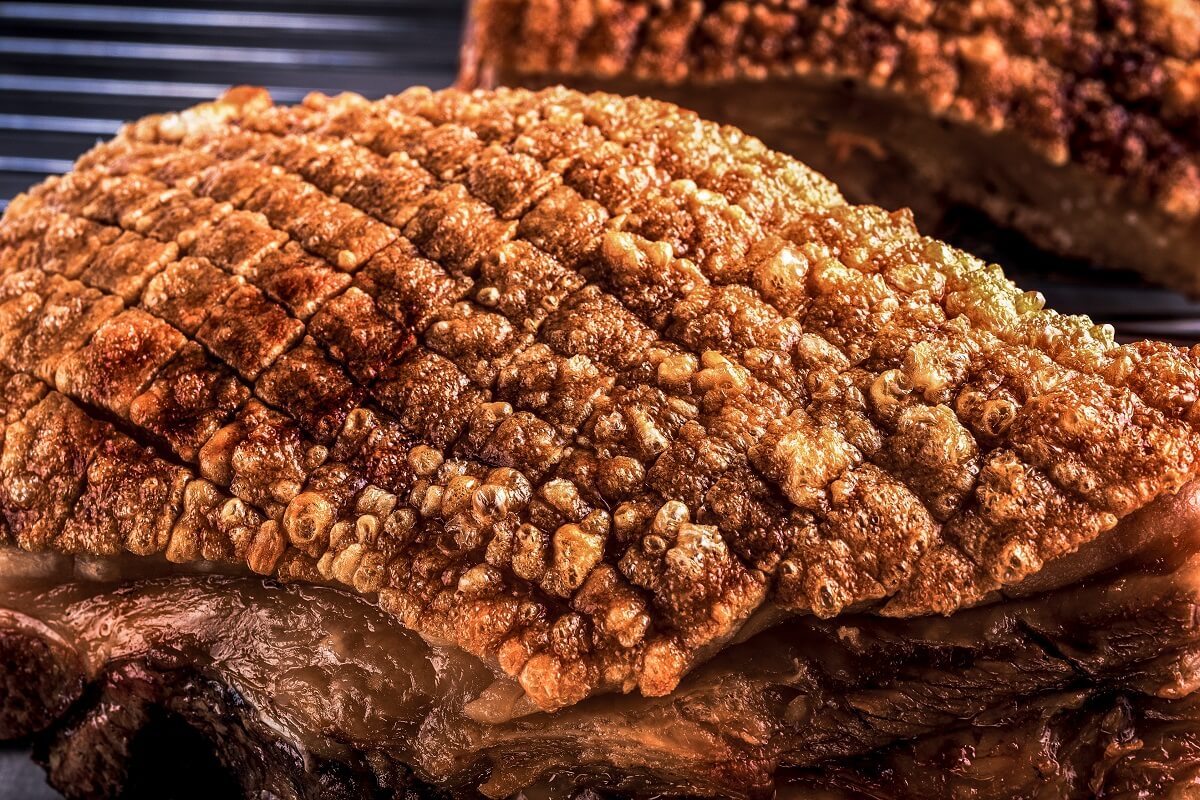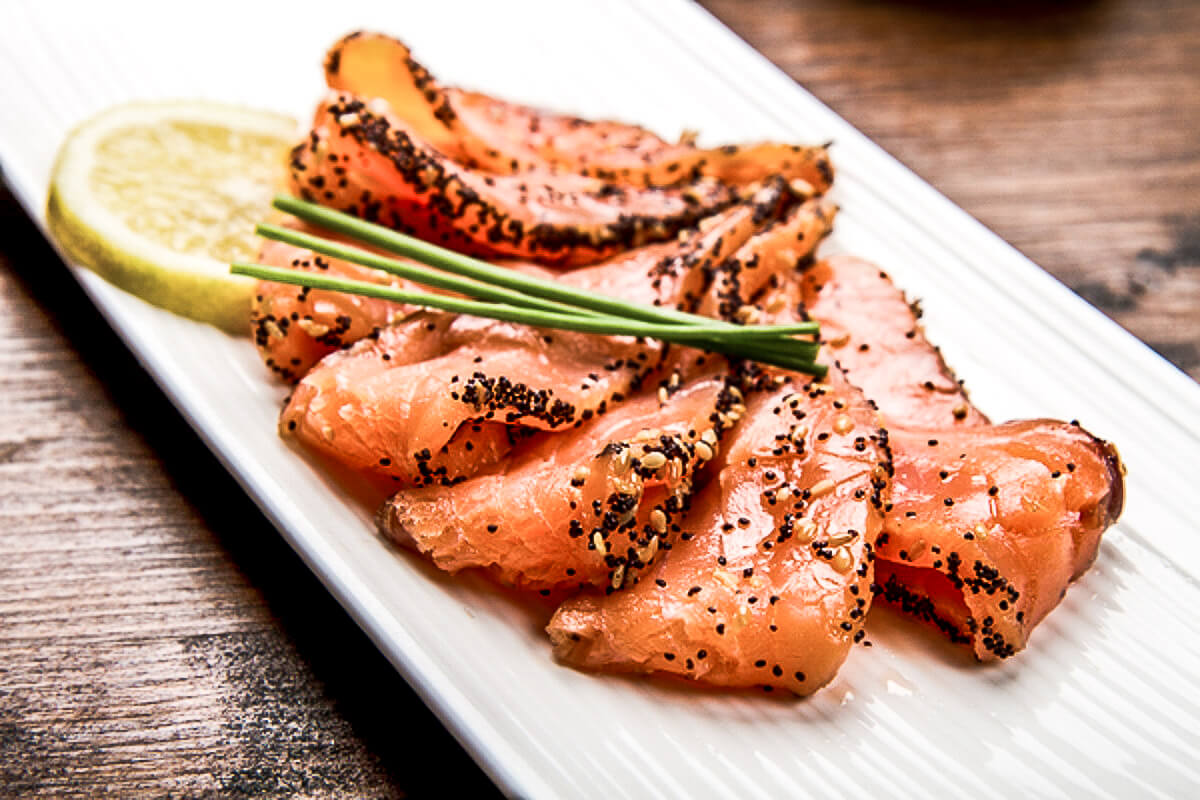Meat Cuts Definition
Chuck Tenderloin is not the name of a prominent action film star. No, it’s the name of a cut – more precisely a meat cut. But what is a cut when it comes to meat? A cut is a piece of meat and, in the above case, a piece from the loin or shoulder fillet of a cow. As we all know, not all meat is the same – even when it is from the same animal. When it is slaughtered, the meat is cut into different pieces, each with different textures and flavor profiles. Therefore, they also call for different cooking methods.
Cuts have been enjoying a lot of hype for some time now, fueled in particular by new cutting techniques and trends. The techniques and trends vary greatly from country to country. What the meat cuts are called also varies depending on the place. The US steak culture in particular has had a decisive influence on the names of the various cuts, as shown by (the not-a-film-star) Chuck Tenderloin, among others.
Cuts are now differentiated by species, breed, age, gender and even the region where the animal was raised. There are primary or main cuts, which refer to the common and very popular cuts of meat, and secondary or special cuts. These tend to include less well-known pieces. However, the latter are by no means second-rate. When properly cooked, they are full of flavor, but usually much cheaper. The list of cuts is endless. The following is a brief – in other words, by no means exhaustive – overview of the most important cuts for beef, pork, chicken and fish.

Image: Rational
Beef cuts
Although beef cuts vary around the world and connoisseurs recognize up to 60 different steak cuts, there are a few basic rules. The best and most expensive pieces of beef usually come from the back muscle – like the rib eye or T-bone steak. Delicate parts come from the lumbar region, while cheaper pieces are usually cut from the abdomen.
Ribeye steak
The ribeye steak is one of the best known and most popular cuts for steak connoisseurs worldwide. This is a juicy and intense steak cut from the middle of the rib roast. The meat’s fine marbling creates an intense flavor and the characteristic fat core – known as the eye – guarantees a juicy outcome. By the way, the closer the cut is to the head, the better.
Tenderloin
Tenderloin is known to be the finest cut of beef. When cooked correctly, the filet is tender and incredibly soft. It is also known as beef steak and is cut from the lean lumbar muscles. This part of the muscle is used very little, which makes the meat particularly tender, low in fat and popular. This is also reflected in the price. In the USA, this fine cut is often also called lady’s cut.
Porterhouse
The porterhouse is a T-bone steak that is cut from the rear end of the short loin. As with the T-bone, it is characterized by its robust flavor and the bone which both the fillet and ribeye are attached to. However, the porterhouse has more filet than the normal T-bone steak and weighs up to 900 g. It is cut relatively thick and therefore takes some time to cook.
Short ribs
The short ribs come from the beef chuck and shoulder of the cow. This cut is characterized by its high meat content. When cooked well – best done “low and slow”, in other words, by smoking or sous-vide cooking – the meat is tender, juicy and falls off the bone. Beef short ribs are the perfect alternative to classic pork spare ribs.
Tri-tip steak
In Germany, this piece is largely known as the Bürgermeisterstück (mayor’s cut). This is a very special piece of meat, which gets its German name from the fact that it used to be reserved for the mayor at the butcher’s shop. The meat is cut from the bottom sirloin of the hindquarter. Thanks to its strong marbling, it is ideal for braising or grilling as a whole.
Flat iron
Also known as a fake filet, the flat iron is considered a secret tip among steak lovers. As the name suggests, this is a very thinly sliced piece of meat that resembles an old iron, hence the name. It has a texture similar to the filet, but is heavily marbled and cut from the shoulder. And it’s precisely this layer that makes the flat iron so aromatic. The more movement, the higher the blood flow and therefore the more intense the flavor. As a result, the tender structure of this cut combines all three facets that delight steak lovers. In the UK and Australia, this cut is also known as butler’s steak or oyster blade steak. Tip: it tastes best when you sear it on both sides.

Image: Rational
Pork cuts
Pork is still the most popular type of meat on the plate in German-speaking countries – unlike in the UK, for example, where beef is the most popular meat. The combination of mostly tender meat and aromatic fat is especially popular. Pork is used to make ribs, juicy pulled pork from the shoulder or other lesser-known delicacies such as presa.
Pork belly
Pork belly is – surprise! – cut from the back of the pork belly. This cut is characterized by a fairly high fat content, which permeates the entire piece of meat and is the reason for its intense flavor. In the southern German-speaking region, it is primarily known as “Schweinebraten” (roast pork).
Boston butt
Boston butt is an American cut that is now becoming increasing popular in Europe. Mainly used for pulled pork, it is cut from the shoulder of the pig. With a fat content of almost 10%, it is not necessarily low in calories. However, when cooked gently and slowly as pulled pork, it is a full-bodied and wonderfully tender taste experience. The fat that melts during cooking makes the meat wonderfully juicy. Plus, when combined with a crispy grilled crust, it is easy to see why this cut of pork is so popular with BBQ lovers.
Presa
This cut is regarded as a delicacy, especially in Spain. It also comes from the pork shoulder, more precisely from the upper shoulder. The piece has a particularly fine marbling – especially if it comes from Iberico pork. Presa tastes great as a pan-fried or grilled steak as well as a whole roast.
Jowl
The pig’s cheek is called the jowl. It is known for its varied taste and delicate texture. Cooking at low temperature is best. Above all, jowl is characterized by its high fat content and is perfect for savory soups and stews.
Loin ribs
Also known as baby back ribs, riblets or short ribs, loin ribs are less fat than the well-known and popular spare ribs. They are cut from the upper back near the spine and have less meat, but more between the ribs. Like classic spare ribs, they are also ideal for grilling or smoking.
Pork knuckle
Who doesn’t know the famous Bavarian pork knuckle? They have almost cult status and can be found on beer garden menus or in traditional Bavarian restaurants. Also known as knuckle of pork, it is cut with the bone from the front or back leg. As a rule, the knuckle is coated with a thick layer of fat and is heavily marbled. However, the meat can easily be removed from the bone if it is braised long enough.
Secreto
This cut is actually unknown outside Spain – hence the Spanish name. This cut is a muscle that lies between the back of the pig and the shoulder. Because you have to search for it, it is also called a “hidden filet”. With its very intense flavor, this cut is suitable for both pan-frying and slow and low cooking methods.

Image: AdobeStock
Chicken meat cuts
Roast chicken, breaded chicken or grilled chicken – poultry tastes great no matter how you cook it. What is less well known is that even chicken cheeks are deliciously tender.
Chickenwings
Chicken wings are among the most popular cuts – whether as classic or deep-fried wings. Chicken wings consist of three parts and are always sold with a wing tip. Whether braised, grilled or smoked, they are one of the absolute classics in finger food worldwide. For example, in the USA, an incredible 1.4 billion buffalo wings (as they are called there) are eaten on the day of the Superbowl alone.
Sot-L’y-Laisse
A real insider’s tip among chicken cuts, this is a filet-like piece of meat from the back of the rump. To put it more precisely: above the thighs on both sides of the spine. It is incredibly tender and juicy and is considered a precious delicacy. In German, it is also known as Pfaffenschnittchen.
Chickencheeks
We now come to a real underdog: the chicken’s cheek. They taste great and have a delicate texture. The only catch: They’re not that easy to find. Once you have finally discovered these cheeks, it is best to cook them for a long time to ensure they are really tender.
Breast
Chicken breast filet is the absolute classic when it comes to chicken. Its low fat content, delicate texture and rather mild taste make it a true all-rounder. Whether grilled, baked, stewed or fried, chicken breast is always a winner. The breast meat is more tender than the legs, but beware: During cooking, the meat dries out more quickly.

Image: AdobeStock
Fish cuts
Last but not least: fish. Although the term cut is not used here in the same way as for land animals, certain words are used to refer to the way a fish is cut up and made ready for consumption.
Filet
A fish filet is usually meaty and boneless. It can come from different parts of the fish, such as the back, sides or stomach.
Steak
Fish steak is cut across the spine, so some of the bones remain in the steak. This cut is more likely to be used for larger fish, such as tuna.
Cheeks
The cheeks are very small, roundish pieces which, as the name suggests, are located directly under the eyes. They have an incredibly fine texture and taste delicious.
Goujons
These long, narrow pieces of fish filet are no more than 1.5 centimeters thick. It is best not to choose very small fish for this, otherwise you will probably not have your fill.
Pavés
Pavés refers to a cut that is exclusive to flatfish such as Greenland halibut. These are small filet pieces with the skin still attached.
















